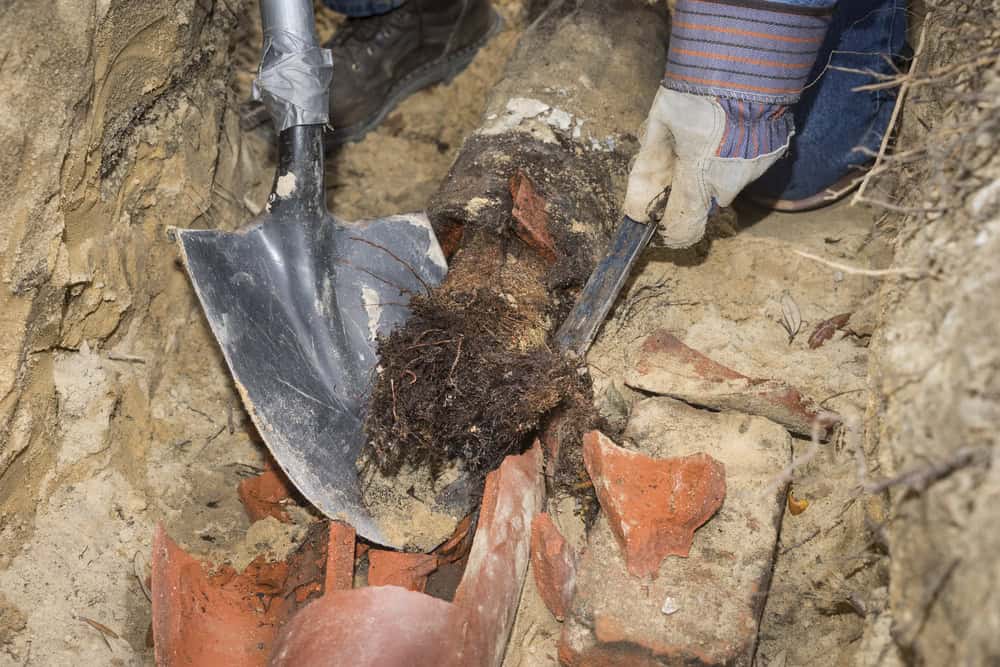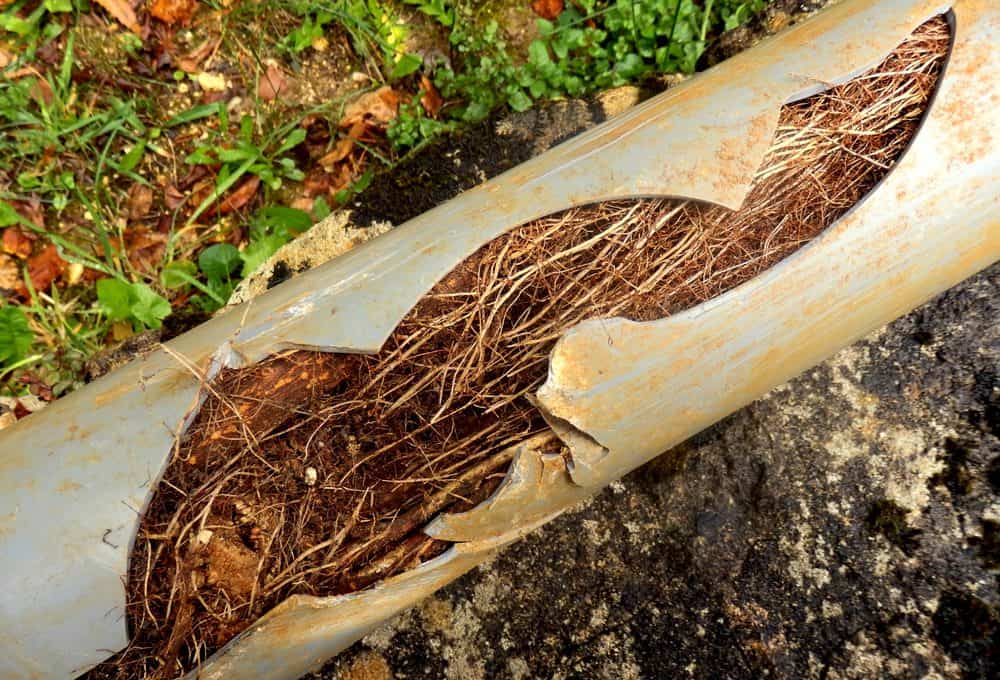Tree roots can be a homeowner’s worst nightmare when it comes to sewer lines. These persistent little invaders can infiltrate systems, causing clogs, leaks, and extensive damage.
If you’re a homeowner with trees nearby, it’s wise to take proactive measures to safeguard your sewer lines. Here’s how to fend off those sneaky roots and keep your plumbing in top-notch condition.
Understanding the Problem
Roots naturally seek out moisture and nutrients, often finding their way into sewer lines. It’s not that trees are plotting against your plumbing; they’re simply following their instincts.
Cracks or leaks can attract roots, and once they have access, they can grow rapidly, leading to blockages. This situation often creates a mess that no one wants to deal with.
Imagine roots making a cozy home inside your pipes, causing backups and slow drains. This scenario is not just a minor inconvenience; it can escalate into a major plumbing disaster.
Recognizing the signs of root intrusion early on can save you time, money, and hassle down the road.
Choosing the Right Trees
When planting trees, it’s important to select species that are less likely to invade sewer lines. Some trees have aggressive root systems that can reach far and wide.
Opt for varieties with less invasive roots, such as dogwoods or Japanese maples.
Spacing is crucial too. Plant trees at a distance of at least 10-15 feet from your sewer lines. This simple decision can make a world of difference, reducing the risk of root invasion and minimizing future plumbing issues.
Regular Inspections
Conducting regular inspections of your sewer line can help catch problems before they escalate. Homeowners should consider scheduling a professional inspection every few years.
Using a camera system, plumbers can identify cracks or leaks that could attract tree roots.
Early detection is key in preventing extensive damage. If you notice slow drainage or foul odors, don’t ignore the signs.
Addressing these issues promptly can save you from larger, more expensive repairs later on.
Root Barriers
Installing root barriers can be an effective way to prevent tree roots from invading your sewer line.
These barriers are typically made from materials like plastic or metal and are installed vertically in the ground to direct roots away from your plumbing.
Positioning barriers in a trench around your sewer line can create a defensive perimeter.
While this method may require some initial investment, the long-term benefits of protecting your plumbing make it worthwhile.
Chemical Treatments
When roots breach your sewer line, some homeowners turn to chemical treatments as a temporary fix. These products, often containing copper sulfate or potassium, can help kill roots in the pipes.
However, they do not solve the underlying issue and should be used cautiously.
Be aware that these chemicals can also harm beneficial foliage and wildlife. Always follow the manufacturer’s instructions and consider consulting a professional before applying any chemicals.
Root Removal Techniques

If roots have already infiltrated your sewer line, it’s time to consider removal. Hydro jetting is a popular method that utilizes high-pressure water to clear out roots and debris.
This technique is effective and environmentally friendly, allowing your pipes to flow freely once again.
Another option is mechanical root cutting, where specialized equipment is used to trim roots back. While this method can be effective, it may not prevent future growth unless other measures are taken.
Maintaining Your Yard
Keeping your yard well-maintained can also impact the health of your sewer lines. Regularly prune your trees and shrubs to prevent them from growing too close to your pipes.
Healthy landscaping can help redirect roots and reduce their intrusion into your plumbing.
Mulching around trees can also provide a moisture barrier, encouraging roots to grow deeper into the soil rather than searching for water in your sewer lines. This simple landscaping practice can be a game-changer in root management.
Professional Help
When in doubt, it’s always wise to reach out for professional assistance. Plumbers have the tools and expertise to assess your situation thoroughly.
They can help with inspections, root removal, and preventative measures tailored to your home’s specific needs.
For homeowners looking for quality plumbing solutions with lasting results, it’s essential to consult experienced professionals who can provide reliable and efficient service.
Investing in professional services can save you from costly repairs later. It’s a smart move for any homeowner who wants to keep their plumbing system running smoothly.
Knowing When to Act
Understanding the signs of sewer line issues is half the battle. Look for gurgling sounds in your drains, slow drainage, or repeated clogs in your plumbing.
These symptoms can indicate that tree roots are causing trouble.
If you suspect that roots are invading your sewer line, don’t wait. Taking action sooner rather than later can help mitigate damage and save you from a plumbing nightmare.
The Role of Mulching
Mulching is often overlooked but can play a significant role in managing tree roots. By creating a barrier of mulch around trees, you can help retain moisture in the soil, which encourages roots to grow deeper instead of spreading toward your sewer lines.
Using organic mulch also adds nutrients to the soil, promoting healthier tree growth. This strategy not only benefits your trees but also protects your plumbing from invasive roots.
Watering Wisely
Trees seek moisture, and if your yard is overly dry, their roots may venture toward your sewer lines in search of water. Water your trees appropriately, ensuring they have enough hydration without over-saturating the soil.
A well-hydrated tree is less likely to grow aggressively toward your plumbing.
Consider using drip irrigation systems to provide consistent moisture to your landscape. This method helps maintain healthy trees while reducing the risk of root invasions.
Educating Yourself on Local Tree Types
Familiarizing yourself with the local tree species can aid in preventing root-related issues. Some varieties are known for their aggressive root systems, while others are more benign.
By choosing the right trees for your area, you can mitigate the risk of root damage to your sewer lines.
Local extension services often provide resources on tree selection and landscaping best practices. Taking advantage of these services can help you make informed decisions for your yard.
Staying Informed About Sewer Line Maintenance
Staying informed about sewer line maintenance is crucial for any homeowner. Familiarize yourself with your plumbing system and understand where the lines run in relation to your trees.
Regular maintenance, such as cleaning and inspecting your sewer lines, can help prevent root-related problems before they arise.
Consider keeping a maintenance schedule to remind yourself of regular checks. This proactive approach will help you stay ahead of potential issues, keeping your sewer lines in great shape.
Investing in Root-Resistant Pipes
When installing new sewer lines, consider investing in root-resistant pipes. These specially designed pipes are less likely to be penetrated by tree roots.
While they may come with a higher upfront cost, the long-term benefits of reduced maintenance and fewer plumbing issues can make this investment worthwhile.
Discuss your options with a plumbing professional who can guide you in selecting the best materials for your needs.
Practicing Preventative Maintenance
Taking preventive measures is the best way to ensure the longevity of your sewer lines. Regularly check for signs of trouble, maintain your landscaping, and invest in professional inspections when necessary.
By practicing good maintenance habits, you can create a home environment that is less prone to tree root invasions. This proactive approach will save you headaches and expenses over time.
Understanding Local Regulations
Before making any changes to your landscaping or plumbing, familiarize yourself with local regulations regarding tree planting and sewer line maintenance.
Some areas may have specific guidelines that can impact your choices.
Staying compliant with these regulations can help you avoid fines and ensure that your property remains in good standing with local authorities.





